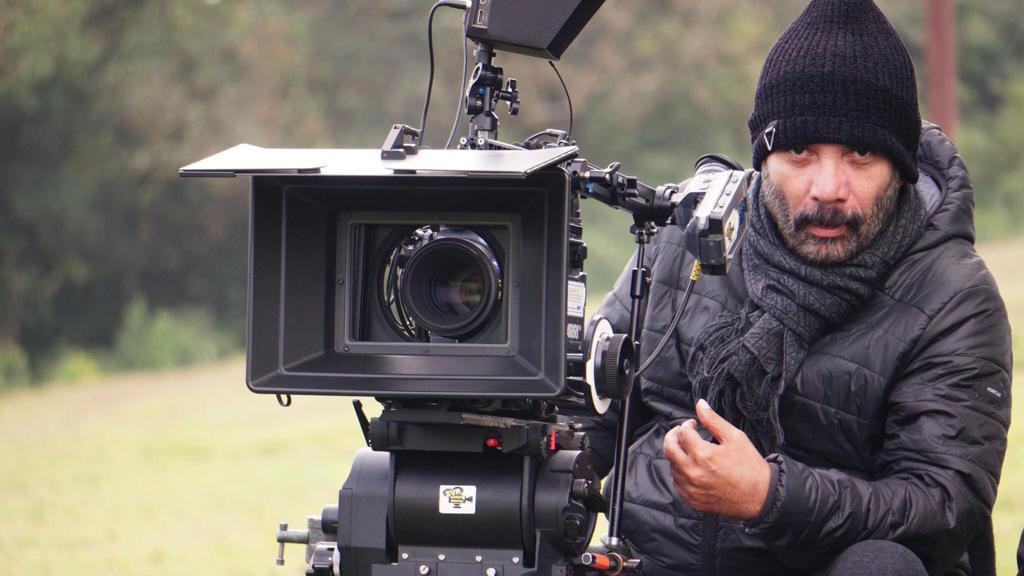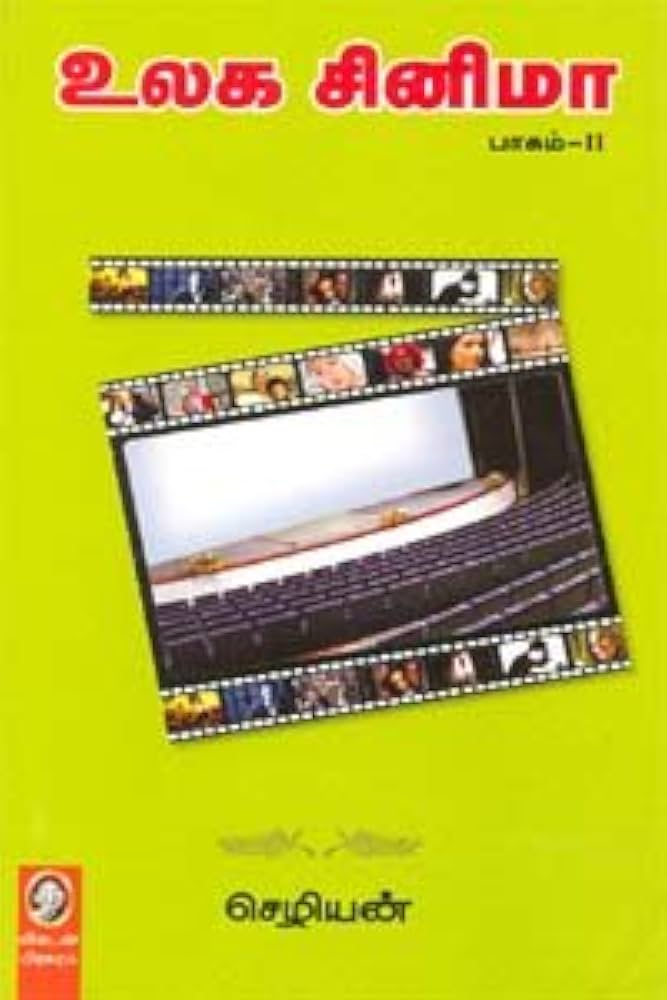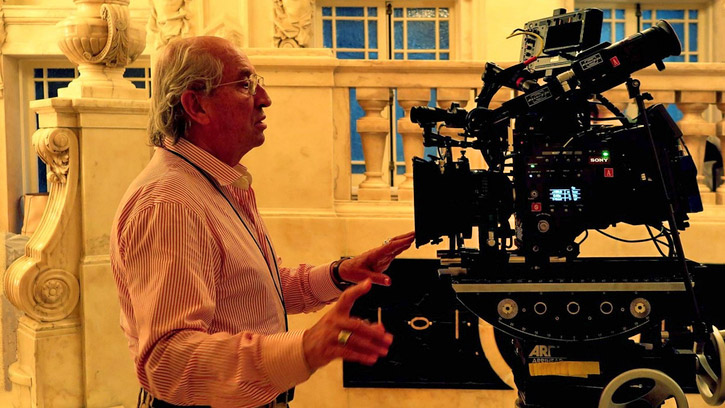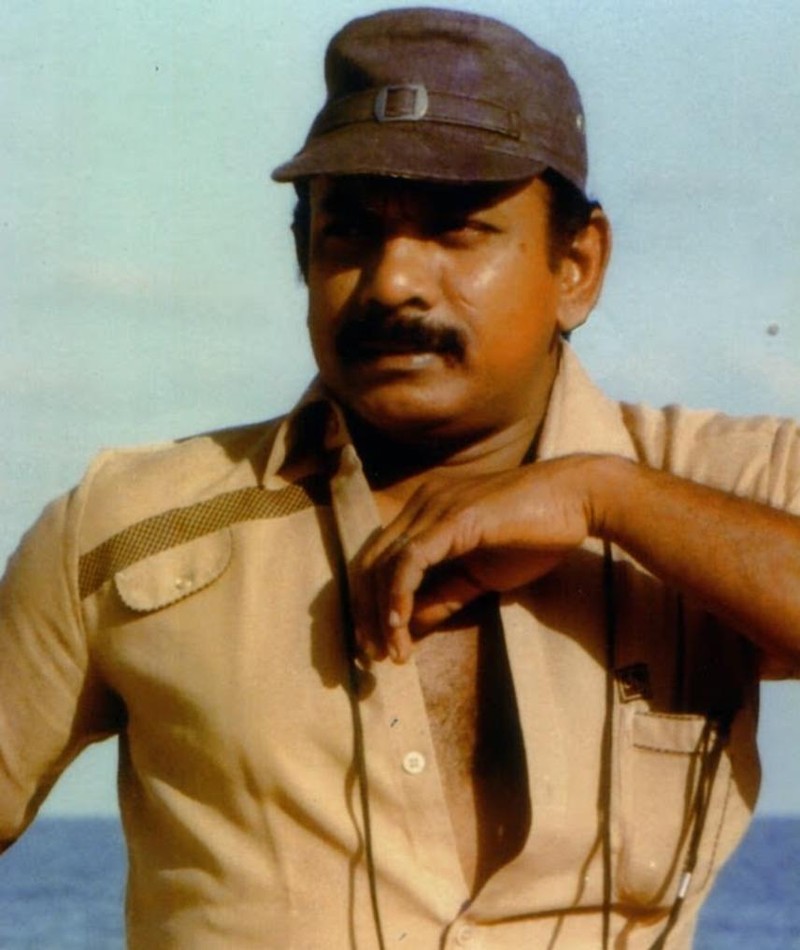
In Conversation : Cinematographer Chezhiyan!
Mar 09 2024
Chezhiyan ISC is a luminary in the world of cinema, known for his exceptional talents as a writer, cinematographer, and director. His directorial debut, “To Let” (2017), produced by his Wife Prema under banner “La Cinema,” swiftly earned international acclaim. Its poignant narrative earned Chezhiyan the prestigious Best Feature Film in Tamil award at the 65th National Film Awards, cementing his status as a visionary filmmaker. Beyond directing, Chezhiyan’s literary brilliance shines through his award-winning short story “Harmoniam” (2004) and his insightful series of books on cinema, “Ulaga Cinema” (World Cinema) in Tamil. With an adept eye for capturing compelling visuals, Chezhiyan’s cinematography has left an indelible mark in documentaries such as “A Little Dream” (2008), further showcasing his versatility and artistic prowess. Chezhiyan’s journey continues to inspire and captivate audiences worldwide, demonstrating his unwavering commitment to storytelling excellence in every facet of his craft.

Chezhiyan gracefully illuminates his remarkable journey into the film world with SICA
How did your childhood experiences contribute to shaping who you are today?
My parents, both teachers, have significantly influenced my passion for storytelling and visualization. My mother captivated me with enchanting stories from Ambulimama and Gokulam, while my father indulged in drawing and painting, passing on his talent for visualization to me. Under his guidance, I learned to appreciate the power of visual representation. Despite facing rejection in my early writing endeavors, it became evident that my talent for writing was undoubtedly inherited from my mother.
In college, my passion for photography led me to prefer working behind the lens rather than in front of it. Initially, cinematography didn’t capture my interest; however, I found inspiration in directors like Bharathiraaja, Maniratnam, and Bhagyaraj, who skillfully brought stories to life through their visual storytelling.
Growing up in Sivagangai, my hometown, I cultivated dreams of becoming a writer, inspired by Annam Pathipagam, a gathering spot for contemporary writers.
How did growing up in Sivagangi shape your artistic endeavors, particularly your interest in cinematography and storytelling?
It was in that environment that I deeply engaged with literature, refining my artistic abilities even more. Guided by the professions and passions of my parents, my upbringing steered me toward the path of storytelling and visual artistry. Though my initial ambitions inclined towards writing and filmmaking, it was the fusion of these two talents that ultimately shaped my creative trajectory.

How did your transition from studying civil engineering to pursuing a career in cinematography unfold?
Driven by my passion for cinema, I took a bold step to move to Chennai after completing my studies, despite my natural shyness. While I faced difficulty in storytelling, my proficiency in writing enabled me to effortlessly produce substantial content, sometimes exceeding 100 pages.
In Chennai, I met Director Rudraiah, who noticed my writing talent. He suggested that learning photography and cinematography would complement my skills and improve my chances of becoming a director.
Following his advice, I returned to my hometown and opened a photo studio to learn photography. I immersed myself in the craft, mastering everything from printing black and white photos to color printing. Additionally, I familiarized myself with video cameras using VHS tapes and even ventured into creating a few short films.
I spent countless nights developing images, finding joy in watching them emerge from the darkroom. This process strengthened my fundamentals organically.
With increased confidence, I went back to Chennai and pursued a career as a cinematographer. After a year and a half of persistent effort, I secured an opportunity to work with PC Sreeram sir. This collaboration marked the start of my journey in cinematography, setting the course for my future in the film industry.

Which experiences or mentors stood out as particularly influential in shaping your early years as a cinematographer?
Under the guidance of PC Sir, I began an extensive learning journey in filmmaking, starting from the fundamentals. Working closely with him, I gained firsthand experience in the film’s creation process. He generously shared Syd Field’s screenplay book, which became my key resource for understanding screenplay techniques.
PC Sir frequently entrusted me with the task of taking notes during story narrations by directors. Subsequently, we would delve into scene discussions, sometimes meeting as early as 6 am at his residence to analyze film scripts. He encouraged me to take on the role of an assistant director and provided guidance in my journey to master cinematography.
I had the opportunity to work on major projects like “Mugavari” and “Alaipayuthae,” as well as numerous advertisement films. PC Sreeram’s approach to cinematography was experimental. He would test lighting from different angles, each offering its own distinct quality. After trying out several methods, he would settle on one, often bringing a completely fresh perspective.
This experience taught me the vital role lighting plays in visually translating written words into cinematic storytelling, emphasizing its significance in cinematography.

What inspired you to launch your writing series “Ulaga Cinema” in Anandha Vikatan, introducing world cinema to your audience, and how do you think it has changed their view and appreciation of global films?
During my college days in Madurai, I was introduced to world cinema, with “Bicycle Thieves” making a significant impact on me. As I watched, I was moved by its poignant storytelling and powerful themes, leading to a flood of emotions and questions. The experience left me teary-eyed as I journeyed back home, igniting a deep fondness for world cinema. Subsequently, I delved further into this realm, exploring films like “Pather Panchali.”
I started my cinematic journey by watching films on Doordarshan, where classic festival films were often aired during afternoons. Upon relocating to Chennai, I continued exploring cinema through VHS tapes. Even while facing restrictions at the film chamber, I found ways to sneak into screenings, sitting on the floor to catch glimpses of world cinema. PC Sreeram, my mentor, introduced me to Bergman’s “Winter Light,” which greatly influenced my cinematic tastes. Excitedly, I shared my film discoveries with friends, who also appreciated my recommendations.

During this time, I was writing poems for Anantha Vikatan, a well-known weekly magazine. When they approached me for a writing series, I proposed the idea of exploring world cinema. The series quickly gained popularity, earning praise from directors who welcomed its fresh perspective. It was fulfilling to see my writing making a positive impact. I attribute my passion for spreading awareness about global cinema to my upbringing in a family that valued sharing knowledge with others, especially as educators. The series spanned nearly two years, during which I introduced a wide array of world films.
How did you approach capturing the essence of the tragic period in history portrayed in “Paradesi” through your cinematography?
After watching “Thenmerku Paruvakaatru,” Director Bala invited me to handle the cinematography for his upcoming film. He gave me a novel as the basis for the film and asked me to read it and come up with a visual interpretation. Initially, I envisioned the film in black and white, drawing inspiration from movies like “Schindler’s List.” Bala was intrigued by the concept, and we discussed various possibilities, including obtaining black and white film stock from the USA. Ultimately, considering commercial factors, we opted for a color format.
When exploring the visual scheme, my initial question was, “What is the story about?” It revolved around the journey of wandering people seeking work, emphasizing the importance of the landscape. Therefore, I envisioned the film highlighting vast landscapes rather than solely focusing on close-ups of people.
During the shoot, Bala and I were struck by the beauty and prominence of the greens in the plantations. This inspired us to consider integrating elements of both color and black-and-white in the final visuals. During the Digital Intermediate process, I desaturated the colors to strike a balance between the two styles, enhancing the greens while maintaining the essence of the black-and-white aesthetic.

What difficulties did you encounter in portraying the emotional depth of the story visually in “Paradesi”?
The primary challenge encountered during the filming of “Pardesi” was handling color. For instance, a color grader in Mumbai cautioned against desaturating color, acknowledging the stunning imagery but advising against excessive manipulation. Many friends echoed similar sentiments. However, I viewed cinematography as a tool to profoundly convey the story, believing that the visual language had to faithfully serve the narrative.
The film garnered critical acclaim and captured the hearts of audiences. This success affirmed the effectiveness of my storytelling approach through visuals, demonstrating the achievement of a delicate balance between color manipulation and narrative enhancement.
How do you manage to balance storytelling while also raising awareness of important socio-economic themes through your films?
In the early days, I frequently heard crew members ask, “Is the image clear enough?” However, for me, cinematography is more than just capturing pretty pictures. I strive to convey genuine human emotions through the frame. To accomplish this, I delve into the intricacies of visuals that highlight details and evoke life. My aim is to immerse the audience in reality through my cinematography.
A friend once mentioned that nearly six films I had shot received national awards, indicating the trust directors have in my ability to accurately capture their vision, particularly for serious or socially relevant stories. Even during the Digital Intermediate process, where images are silent, I strive to convey untold emotions through my visuals. This pursuit echoes the successes of acclaimed filmmakers like Christopher Doyle and Vittorio Storaro, known for their mastery in storytelling through the medium of filmmaking.

How does light influence the narrative in storytelling?
Lighting is pivotal in storytelling. Excessive lighting, as Vittorio Storaro emphasized, can disrupt the narrative more than poor acting or a weak script. A Japanese cinematographer compared light to salt, noting that even a small excess can spoil the experience. My goal is to create a visual scheme, including lighting, that immerses the audience in a three-dimensional experience on a two-dimensional screen. I aim to replicate the feeling of peering through a window, adding depth and realism to the viewer’s perception. This is the standard I aim for in my work as a cinematographer.

What compliment meant the most to you as a cinematographer, besides awards?
When asked about his favourite Indian cinematographers, Balu Mahendra named Santosh Sivan and Chezhiyan. It’s indeed an honour to be mentioned alongside such esteemed talents in the field of cinematography.

How did you ensure authenticity in depicting the struggles faced by lower-middle-class families on screen in “To Let”?
Taking Balu Mahendra’s advice to heart to incorporate personal experiences into debut films, I sought inspiration from the simplicity and depth of Iranian cinema for my first film, “ToLet.” The screenplay for “ToLet” emerged from my personal writing notes, reflecting my observations and experiences.
I faced numerous challenges in bringing “ToLet” to life from the beginning. However, I meticulously recorded the cinematography techniques and obstacles encountered during the process in an elaborate screenplay book.
When it premiered, the film caught the attention of respected figures in the film industry. Asghar Farhadi, the acclaimed Academy Award-winning director, expressed curiosity about the filmmaking process in India and the execution of cinematography in “ToLet.” Similarly, Larry Smith, a distinguished cinematographer renowned for his collaborations with Stanley Kubrick, found the portrayal of the three characters in “ToLet” intriguing. Even though they came from the same family, their diverse backgrounds left a strong impression on him. Smith was prompted to send an appreciative email praising both the film and its cinematography.

“ToLet” achieved remarkable success, earning over 80 international awards, which further validated the creative choices made during its production.

How do you see storytelling differing between writing and filmmaking, and how do you adjust your creative approach to each medium?
With a passion for writing, I frequently jot down my observations as short notes, using them as a foundation for developing ideas. The writing process involves numerous drafts until reaching the final version. However, as a renowned writer pointed out, a common mistake in writing is the inclination to express everything.
Transitioning from writing to cinematography and filmmaking, I strive to convert words into visual representations. This involves condensing the verbal content while preserving its essence. Influenced by my life experiences and encountered stories, I translate them into captivating visual narratives through years of practice and dedication.
Can you tell us about your recent film?
“Kondral Paavam,” a film for which I handled cinematography, unfolds in a rural village at night, devoid of electricity. To evoke the atmosphere, I utilized LED lamps to replicate the warm glow of hurricane lamps. Despite challenges, we successfully wrapped up the shoot in just 12 days.
What upcoming projects are you looking forward to, and how do you plan to further explore and expand your artistic vision in the world of cinema?
Gaining substantial recognition from revered filmmakers like PC Sreeram and Balu Mahendra is a cherished honor that I strive to maintain throughout my career. Currently, I’m involved in several projects, such as “Mailanji” with writer Ajayan Bala, a docu-fiction project for Netflix, and an Indo-foreign collaboration feature film. Each of these endeavors offers distinct challenges and avenues for creative exploration.
SICA wishes Chezhiyan more accolades and success in future.
Article by
CJ Rajkumar
Author/Cinematographer
